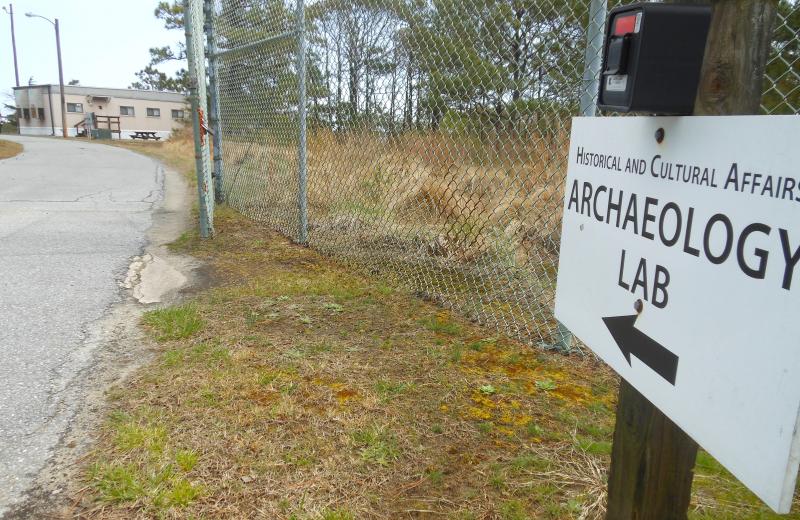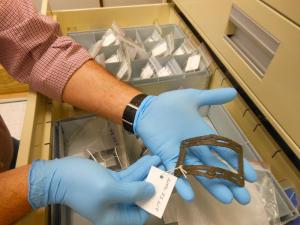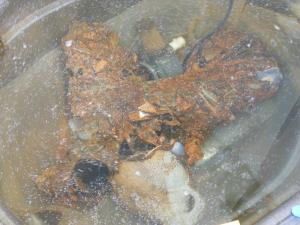After nearly 15 years, a research lab housed in a double-wide trailer in Cape Henlopen State Park is closing its doors. Artifacts from a Roosevelt Inlet shipwreck housed at the lab will soon move to the state's archaeological curation facility in Dover.
The shipwreck was discovered during a 2004 beach replenishment project on Lewes Beach.
During a recent tour of the trailer, Paul Nasca, state curator of archaeology, said it became clear pretty quickly the dredging operation had struck a submerged archaeology site after artifacts and ship remnants began washing up on shore. He said evidence shows the vessel is a cargo ship from the 1770s or 1780s, but the country of origin is still in doubt.
Cargo can be traced to Britain, the Netherlands, Germany, Spain, China, Africa and Russia. Nasca said some think it was a British ship called the Severn, while others think it was a Dutch vessel called Maria Johanna.
The trailer is tucked away on a small, treed dune, behind a chain-link fence between the Biden Center and Herring Point.
Nasca said the trailer has served an important function, but its exposed location leaves it vulnerable to the whims of Mother Nature.
Nasca said the division was also recently accredited by the Washington, D.C.-based American Alliance of Museums, but the trailer does not meet preservation standards, so it can no longer be used.
The state has hundreds, if not thousands, of archaeological sites, Nasca said, with somewhere in the neighborhood of 4.5 million artifacts. According to information on the Division of Historical and Cultural Affairs website, approximately 80,000 artifacts have been recovered from the cargo ship.
Nasca said the Roosevelt Inlet shipwreck ranks among the top five archaeological sites, with another Lewes shipwreck, the DeBraak, being the most important. He said the amount of material from the Roosevelt wreck shows the vessel was full when it sank, and it represents a specific moment in time, unlike a trash pit that is added to over the years, he said.
Nasca said the most important thing the shipwreck shows is that Delaware and Lewes were participating in a worldwide economy. He said Delaware and other colonies had valuable natural resources to trade for finished goods from other parts of the world.
“This shows Delaware wasn’t just the rural three-county cousin to Pennsylvania,” Nasca said.
Nasca said the move is expected to begin this summer with dry material and finish by the end of the year with material stored in water for preservation. When the move is complete, he said, the trailer will be turned over to the park.
Nasca said some of the Roosevelt Inlet shipwreck’s artifacts will remain in Lewes at the Zwaanendael Museum, 102 Kings Highway, and the Lewes Historical Society’s Margaret H. Rollins Community Center, 101 Adams Ave.
Chris Flood has been working for the Cape Gazette since early 2014. He currently covers Rehoboth Beach and Henlopen Acres, but has also covered Dewey Beach and the state government. He covers environmental stories, business stories and random stories on subjects he finds interesting, and he also writes a column called Choppin’ Wood that runs every other week. He’s a graduate of the University of Maine and the Landing School of Boat Building & Design.
































































